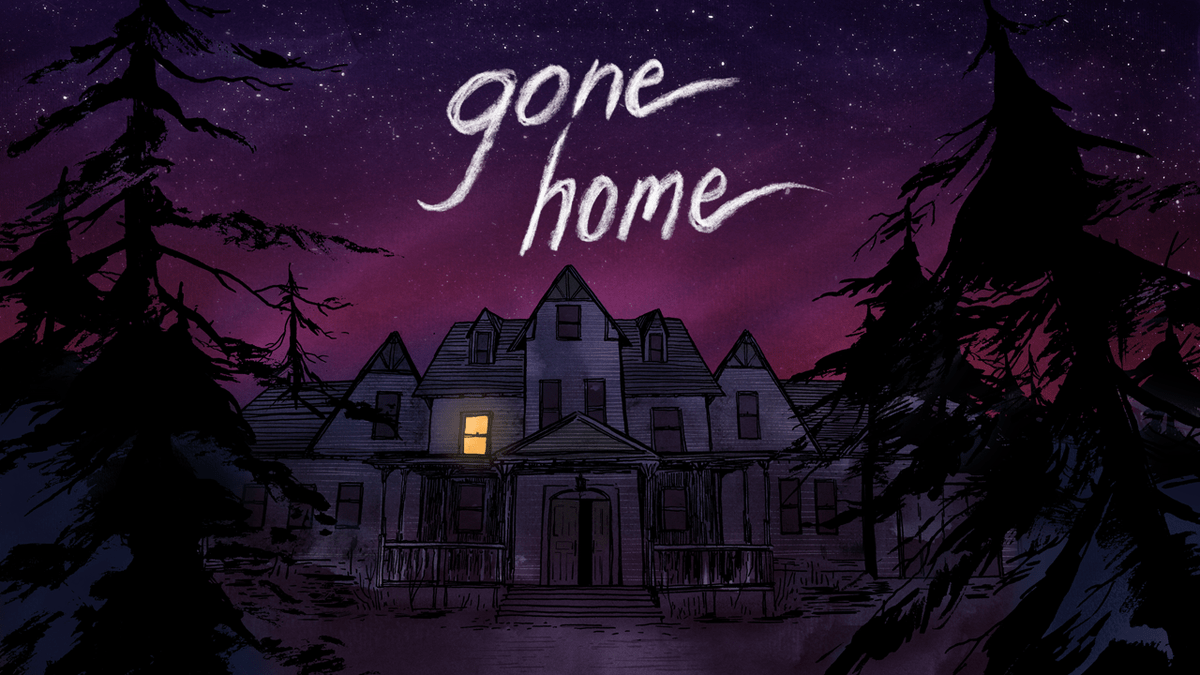Developed by The Fullbright Company, Gone Home is a first-person mystery and walking simulator intended for audience 13 years and above who are interested in mystery, exploration, and thriller games. As the protagonist Katie, your premise is to uncover your family’s disappearance after returning home from abroad. I ended up playing this game on my Mac via Steam for better experiences, but Gone Home is also available on Switch, PlayStations, Xbox One, EPIC, and AppStore.
Central Argument
The core mechanics of this game are walking and investigating; along with the intermix of interaction loops and arcs, Gone Home successfully creates an embedded narrative that unveils stories of the Greenbriar family as players actively investigate the mansion.
Analysis
The core mechanics of the game relies on the interaction loop of walking, examining the object, getting clues, and updating the existing mental model of the story. Specifically, each clue discovery is an individual loop, and players gradually master this loop as they gather more clues and advance through the complex part of the game. This loop begins immediately when the game starts. After learning a bit of context about Katie returning home from abroad, players are placed in front of a locked mansion door. To enter the mansion, players are required to learn to walk around, examine objects, and solve puzzles (i.e. find door key). After successfully obtaining the key, the story advances by shifting the scene into the mansion itself and playing audio message left by Katie’s sister Sam. This visual and audio feedback is a clear indication for players to update their mental model about who leaves the note on the door outside and how the rest of the game works. Since the loop is repeated almost constantly, player would eventually stop focusing on the mechanics and focus more on the mystery itself.
The architecture of the mansion plays a crucial role in shaping the pacing of the story. In Gone Home, players can interact with nearly all objects, but audio messages from Sam are triggered only upon entering specific areas. The game uses this feature alongside a dynamic map to subtly control the narrative’s pace. Initially, the map reveals only a limited number of rooms, guiding players to explore these areas first. As players venture into these spaces, they discover that more rooms appear on the map. However, since they didn’t know the existence of other rooms, players would naturally start investing the initially visible rooms that contain audio messages that lay the groundwork of the story. Some rooms, including hidden passages, attics, and basements, remain until certain points in the story, ensuring the narrative progresses as intended, even if players sprint through all the available rooms at the beginning.



Hidden passages and rooms are added after they’re explored by the player
The setting of the mansion in a dark, rainy night also heavily influences how players construct the embedded narrative. As a player, due to the eerie music and dark rooms, I was constantly suspecting someone to jump scare me during the game. With the suspense and tension, I suspected the ending would be finding Sam’s corpse in the attic due to her relationship with Lonnie (also because the attic was in red), thus creating a surprising twist when I discovered the ending was relatively optimistic.
The Arcs and Loops
The entire game architecture is connected through the intermix of micro parallel arcs and loops. Although there’s no clear “level” in Gone Home, I would categorize the basement and hidden passages as a different level. Once players enter those rooms, the clues become a bit more challenging, and those are the key clues to unveiling Lonnie and Sam’s relationship. For every clue, there’s some evocative stimuli such as Lonnie’s image, cassette tape playing rock music, and Sam’s audio recording that complement players construction of the narrative. The loop component comes in as you can only discover the clues by completing the investigation loop mentioned above. Although Sam’s the key focus of the story, players can actually construct the story of each character, including the psycho uncle, Terrence, Janice, and Lonnie, by reading the letters and observing the environment. For instance, the books and letters show that Terrence is a failed writer. This adds more fun to players who satisfy their psychology of needs through information.

Conclusion
Despite having to turn on lights immediately after entering each room as I was terrified, I love this game! The beautifully designed scenes and realistic spatial audio cultivate an immersive environment, as if I were exploring the mansion in real life. The game successfully fosters an eerie environment by integrating small details like lightning, journals containing haunted sights, and cracking door noises. If I were to change one thing about the game, I would hope there are more elements like gathering Sam’s note to unlock the lockers, as that includes more active narrative comprehension rather than passively listening and reading.

Overall, this game deserves to be played more than once to learn more about the stories of each character!



